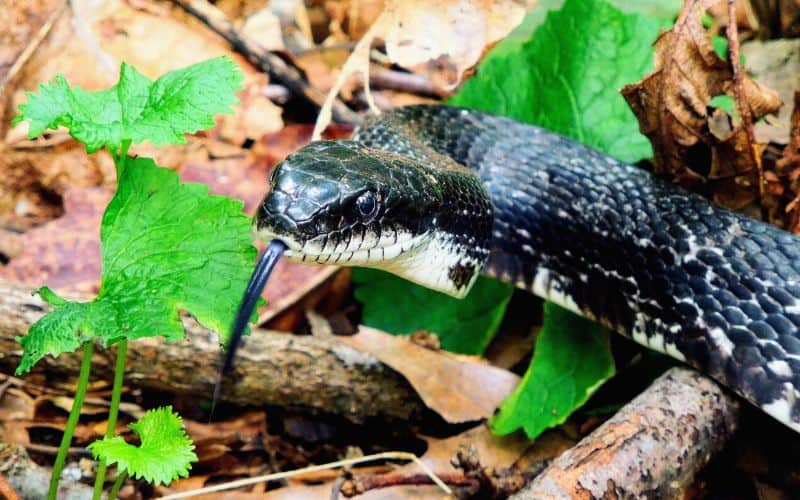If your first instinct when you see a snake is to run for the hills, then this guide is for you!
Although snakes can be scary, there’s no reason they should keep you from enjoying the great outdoors. Snakes try to avoid humans, but they can become aggressive when provoked in their own territory. If you abide by the following tips, most danger noodles will ignore you and carry on their way.
Although quite rare, snake bites can be dangerous. We’ve included lots of guidance on how to handle a snake bite should one ever occur.
Ready to tackle that hike in snake country? Then read on to learn snake protocol for your next outdoor adventure.
Table of Contents
1. Watch Where You Walk
The best way to avoid an encounter with a slithering reptile? Watch where you’re stepping, sitting, or gathering firewood. Most snake bites occur when people accidentally step on a snake or grab one while collecting firewood.
Be mindful of where you put your hands and feet at all times. Stay on the trail whenever possible. Don’t lift big rocks since snakes like to hide under them. Step on top of logs and rocks, and not over them, since snakes could be hiding behind them.
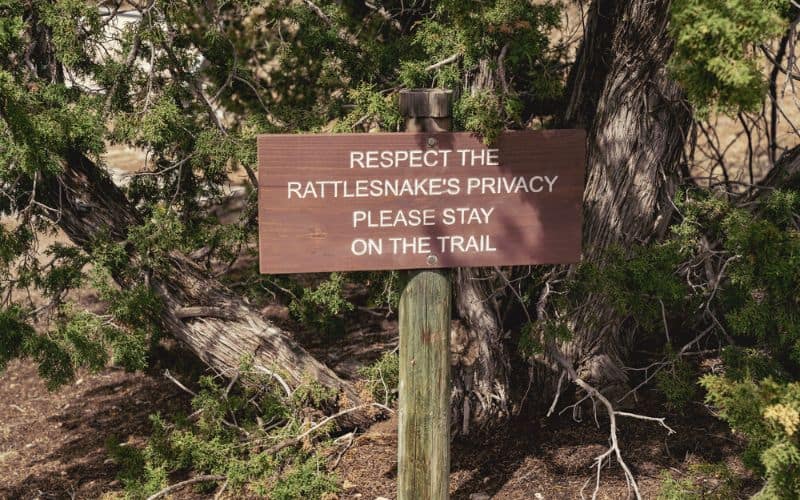
2. Use Poles
Hiking poles aren’t just for helping you navigate a trail, they act as the perfect precaution against snakes. Snakes have a poor sense of hearing but they can detect the vibrations the poles make when they strike the ground. When snakes detect these vibrations, most will actively avoid them.
You can also use hiking poles to poke around any bushes or rocks you need to pass through – if there is a serpent hiding in there, it will strike the pole and not your lower leg.
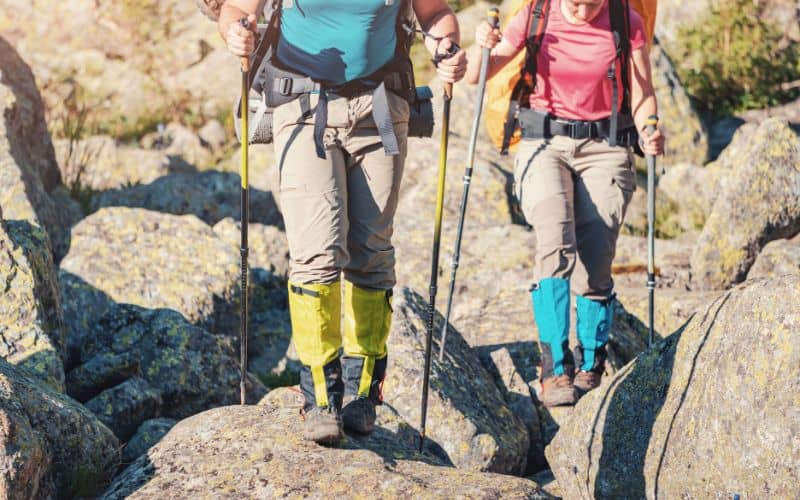
3. Wear Gaiters
If you regularly spend time outdoors in venomous snake-inhabited areas, consider investing in snake gaiters. Worn from around mid-leg to around your calves and ankles, gaiters are basically a re-design of common chaps. These specific gaiters, however, are made from impenetrable fabric designed to prevent bites.
While wearing gaiters might seem like overkill for some, you’ll be mightily glad you wore them if bitten, especially if you’re in an area with rattlers, brown snakes, or other highly venomous species.
4. Keep Kids and Pets Close
The best way to avoid a bite is to avoid stepping on or near snakes in the first place. Kids and pets often can’t recognize this danger, so it’s important to keep them close to you while on the trail. Don’t let them explore in tall grass or bushes where snakes could be hiding and keep dogs leashed in areas you know are inhabited by venomous snakes.
5. Remain Calm and Slowly Back Away (Don’t Run!)
We get it… when a serpent starts slithering towards you, it can be pretty scary. In fact, research suggests that a fear of snakes may actually be embedded in the DNA of humans.
If you have a snakey encounter, it’s vital not to run, scream, or panic. Stay calm and still until the snake passes. Snakes can feel vibrations from the ground and they could interpret your sudden movements as a threat.
Remember that this obviously doesn’t apply if you’ve stepped on a snake. In that case, you’ll want to move away from it as fast as you can. If you have hiking poles, keep them between you and the snake. It might just attack the poles instead of you.
If you happen to find a snake inside your tent, things are a little trickier. In this case, your best bet is to open the door and wait for it to leave.
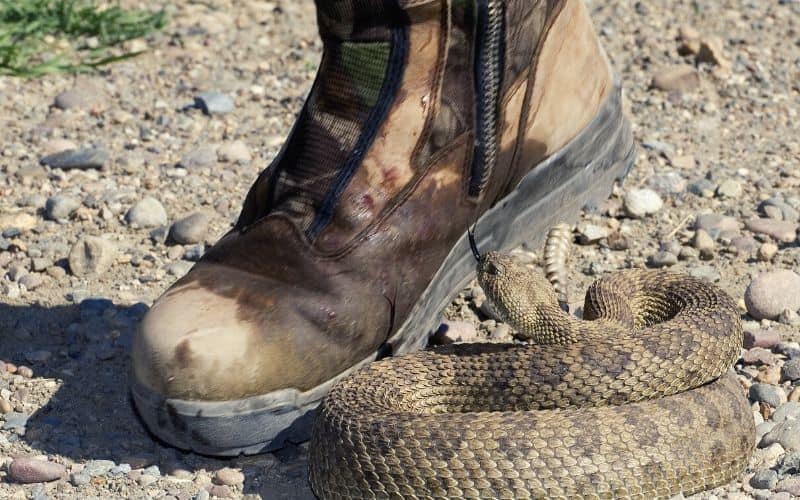
6. Stay Out of Range
While your first step should always be to stay still and wait for the snake to pass, this only applies if you are already out of striking distance.
If you’re within range or striking distance (around 3-5 feet), back away slowly. If the snake doesn’t appear to be moving and it’s not showing any aggressive behaviors like huffing, puffing, or hissing, then you can go around the snake, making sure to give it a wide berth.
Don’t worry, it won’t chase you. Even if a serpent huffs, hisses, or rattles at you, that’s just their way of asking you to get the heck out of there.
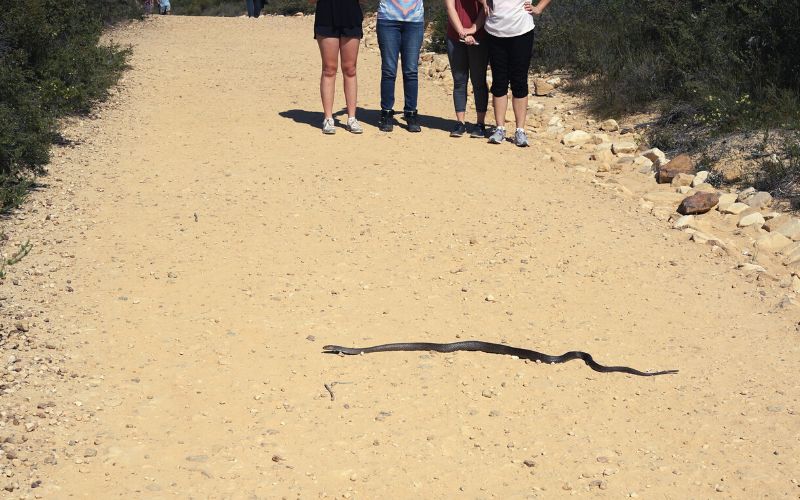
7. If a Snake Approaches…
If your slithery friend starts approaching you, it’s probably because it hasn’t detected you. The best course of action is to either stomp on the ground or remain perfectly still.
By stomping on the ground, snakes will likely detect you and change direction. If you’re brave, you can just stand still and wait for it to pass. Remember, it might slither right over your feet but you’ll need to remain motionless to avoid startling it.
8. Warn Fellow Hikers
If you encounter a venomous or dangerous snake on a highly-trafficked trail, be sure to warn other hikers about it. By letting others know about its presence on the trail, you’re helping everyone involved to stay safe.
Whatever you do, leave it alone! Some guides suggest using your hiking poles or a stick to try and prod the snake off the trail but that’s just asking for trouble. Most bites occur to people that were interacting with a snake.
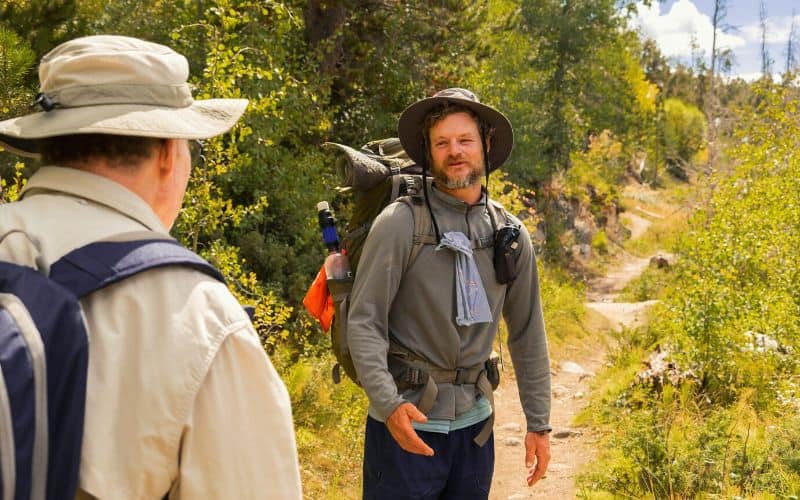
9. If You Get Bitten
While most snakes are not venomous, treatment for a bite is the same in every instance – take the bite victim to the emergency room immediately for evaluation and anti-venom if necessary.
Keep the person calm and make note of the time of the bite. Keep the bitten limb as still as possible and avoid lifting the limb over the person’s head. If you know the bite is from a non-venomous species, you can clean the bite using alcohol wipes or Neosporin from your first-aid kit.
While you should always try to identify the snake if you can, this is not the time to turn into a professional serpent catcher. Don’t waste time trying to track it down and kill it. When transporting a dead snake for identification, remember that it can still bite up to one hour after its death.
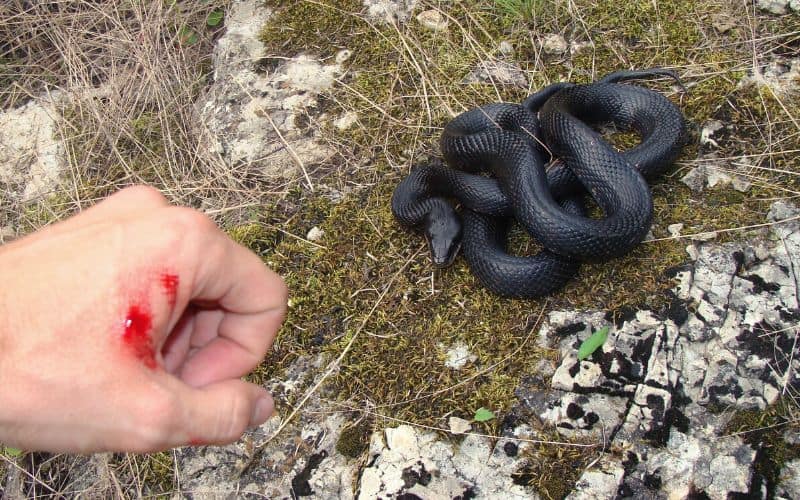
Don’t try old wives’ tales like sucking out the venom or cutting into the bite. These won’t work and the movement could even cause the venom to spread more quickly.
Overall, remember not to panic! While a bite is scary, it is rarely deadly. The most important thing is to drive the person to the nearest hospital asap and call ahead of time to ensure they have anti-venom because not all hospitals do.
What to Do If You See a Snake When Hiking…
Snakes should be appreciated, not feared. These long, legless reptiles play an important role in their ecosystems by helping to control rodents and acting as both predators and prey. If you see a snake, try and treat it as a privilege, not something to be dreaded.
We hope our guide on what to do if you see a snake when hiking has prepared you for your next encounter in the wild. Let us know what you think in the comments below and feel free to share this guide with your family and friends!
